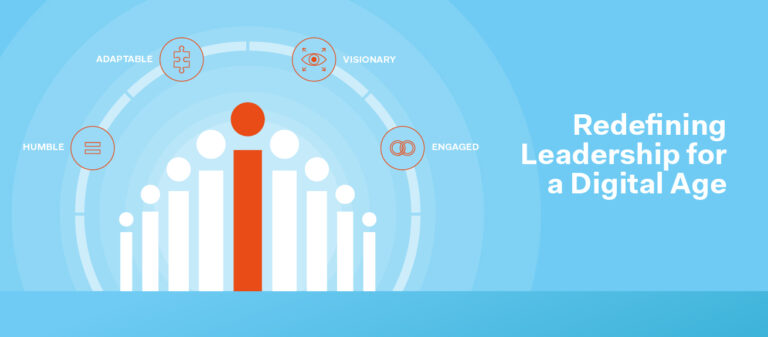In an era where technology underpins nearly every aspect of business, the Chief Information Officer (CIO) role has evolved from a supportive function to a critical driver of strategy, innovation, and overall business transformation. Prashant Bhardwaj Chief Information Officer (CIO) today is expected to integrate advanced technology with organizational strategy, foster a culture of continuous innovation, and optimize IT operations to ensure competitive advantage. Prashant Bhardwaj exemplifies this modern Chief Information Officer (CIO), leading the way in transforming IT strategy and implementing forward-thinking innovation across organizations. This blog delves into Bhardwaj’s visionary approach as a Chief Information Officer (CIO), exploring his strategies, methods, and impact on the technology landscape.
1. Building Agile IT Frameworks for Rapid Adaptation
One of the core ways Prashant Bhardwaj Chief Information Officer (CIO) transforms IT strategy is by prioritizing agility within IT frameworks. As businesses increasingly face rapid technological advancements and market shifts, the ability to respond quickly becomes essential. Bhardwaj has redefined the traditional IT infrastructure by incorporating agile methodologies, cloud solutions, and modular systems that allow his organization to pivot efficiently without compromising operations.
Implementing Agile Methodologies
Under Bhardwaj’s leadership, agile methodologies have been embedded into IT processes, enabling faster response to changes and improving collaboration among cross-functional teams. By adopting practices like iterative development, continuous deployment, and sprint planning, his IT teams can quickly address evolving business needs. Agile not only improves productivity but also fosters innovation, as teams are encouraged to experiment with new ideas, technologies, and solutions.
Cloud Transformation for Scalability
Cloud computing plays a key role in Bhardwaj’s agile IT strategy. Through cloud migration, he has been able to support scalable, flexible solutions that accommodate peak loads, seasonal demands, and growth initiatives. The cloud environment also facilitates real-time collaboration across teams, allowing global teams to work seamlessly. With cloud-based solutions, his organization gains both operational resilience and the ability to launch new services or products quickly, a competitive edge in today’s digital-first world.

2. Harnessing Data Analytics and Artificial Intelligence for Insight-Driven Decisions
Bhardwaj understands the value of data as a strategic asset and has been instrumental in integrating data analytics and artificial intelligence (AI) into his IT strategy. By leveraging these technologies, he empowers the organization to make data-informed decisions that drive growth and efficiency.
Building a Data-Driven Culture
To effectively utilize data, Bhardwaj has fostered a data-driven culture within the organization, encouraging teams to rely on analytics to inform strategies and actions. He has integrated sophisticated data platforms that allow real-time data collection, processing, and analysis. This infrastructure enables his teams to identify trends, forecast customer behaviors, and assess performance across various metrics.
AI and Machine Learning for Predictive Insights
Artificial intelligence, especially predictive analytics, plays a prominent role in Bhardwaj’s IT innovation strategy. For example, by implementing machine learning algorithms, the organization can now analyze large datasets to identify patterns and predict future trends. This capability has proven invaluable in areas such as customer service, supply chain management, and market analysis, allowing Bhardwaj’s organization to stay one step ahead of competitors.
3. Prioritizing Cybersecurity as a Business Imperative
Cybersecurity remains one of the foremost concerns for organizations today, and Bhardwaj has championed a proactive, multi-layered cybersecurity strategy that prioritizes the protection of sensitive data and digital assets. His approach goes beyond reactive measures to create a culture of security awareness across all levels of the organization.
Implementing Advanced Security Protocols
Bhardwaj has instituted advanced security protocols, including threat detection systems, encryption, and continuous monitoring. By leveraging AI-driven security tools, his team can detect potential threats in real time, minimizing risks and ensuring swift responses to any suspicious activity. This approach provides robust defenses against cyber-attacks and data breaches, helping protect the organization’s integrity and trust with customers and stakeholders.
Employee Training and Awareness Programs
Recognizing that cybersecurity is only as strong as its weakest link, Bhardwaj has also invested in regular training programs that educate employees on security best practices. His emphasis on creating a security-conscious culture has resulted in employees who are proactive in identifying and preventing potential security breaches. This holistic approach to cybersecurity strengthens the organization’s defenses and supports Bhardwaj’s commitment to safeguarding digital assets.
4. Enabling Digital Transformation Through Collaborative Innovation
As Chief Information Officer (CIO), Bhardwaj plays a pivotal role in driving digital transformation across departments by promoting collaboration and open communication. He understands that innovation thrives in an environment where diverse perspectives and skills come together to address challenges and explore new ideas.
Promoting Cross-Departmental Collaboration
Bhardwaj has facilitated cross-departmental partnerships, particularly between IT, marketing, finance, and operations. These collaborations encourage the sharing of insights, allowing teams to co-create solutions that are aligned with organizational goals. This collaborative model has led to significant advancements in product development, customer service, and process optimization, ensuring the organization remains relevant and competitive.
Fostering a Culture of Continuous Improvement
Bhardwaj believes that digital transformation is an ongoing process and has instilled a culture of continuous improvement within his IT teams. Through initiatives like hackathons, workshops, and innovation labs, he encourages teams to experiment with new technologies, challenge the status quo, and explore disruptive ideas. This culture of innovation empowers employees to think creatively, resulting in breakthrough solutions that add value to both the organization and its customers.
5. Optimizing Customer Experience with Technology
In Bhardwaj’s view, technology’s ultimate purpose is to enhance the customer experience. His IT strategy is heavily focused on integrating technology that improves customer interactions, personalization, and satisfaction. By aligning IT initiatives with customer needs, Bhardwaj ensures that his organization’s technology directly contributes to customer loyalty and retention.
AI-Driven Personalization
Through AI and machine learning, Bhardwaj has enabled personalized customer experiences. By analyzing customer data and preferences, his team can tailor products, services, and communications to individual needs. This level of personalization has led to a significant increase in customer engagement and satisfaction, as customers feel more connected to the brand.
Streamlining Customer Service with Automation
Bhardwaj has also incorporated automation in customer service, deploying AI-driven chatbots and self-service portals that provide instant support. These tools not only reduce response times but also allow the customer service team to focus on more complex inquiries. This balanced approach to customer service ensures efficiency without sacrificing quality, enhancing the overall customer journey.
Conclusion
Prashant Bhardwaj exemplifies how a modern Chief Information Officer (CIO) can transform IT from a support function to a strategic powerhouse. His approach, which prioritizes agility, data-driven decision-making, robust cybersecurity, and customer-centric technology, underscores the evolving role of the Chief Information Officer (CIO) in today’s digital economy. By fostering a culture of collaboration and continuous innovation, Bhardwaj ensures that his organization remains adaptable, competitive, and prepared to meet future challenges.
As organizations increasingly rely on technology for growth, Bhardwaj’s leadership provides a compelling model for Chief Information Officer (CIO) aiming to drive strategic innovation. His work demonstrates that the true power of technology lies not only in its ability to streamline processes but also in its potential to reshape the organization’s future. For Prashant Bhardwaj, the role of Chief Information Officer (CIO) is not just about managing technology—it’s about transforming possibilities into realities and steering the organization towards a future where technology and strategy are seamlessly aligned.








